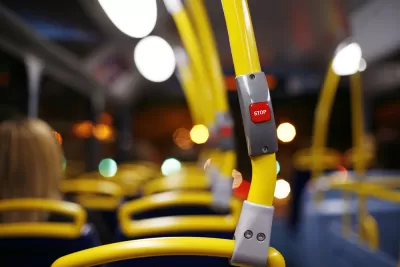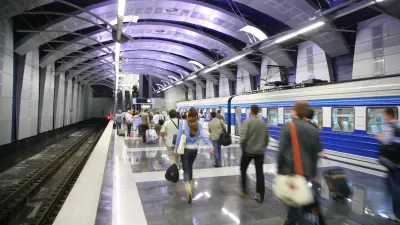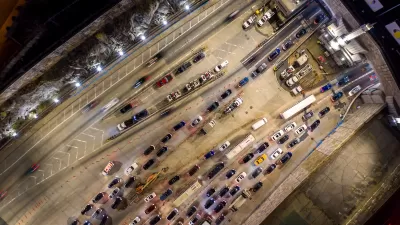As people re-evaluate their transportation decisions, the argument to support transportation demand management might not be what policy makers expected.

The Mobility Lab team wants transportation demand management (TDM) professionals to potentially reexamine the organizational goals and definitions of their work.
A post by Paul Mackie of Mobility Lab asks the question: "Would a common definition of the term and practice of transportation demand management help the industry find other funding sources, do better lobbying for policies, and gain wider acceptance and popularity?"
Mackie builds on the arguments from a presentation by Kirk Hovenkotter, a program analyst at TransitCenter and Mobility Lab contributor. According to Hovenkotter's argument, as described by Mackie, one of the primary sources of federal funding for TDM programs leads practitioners astray by focusing on ideas that don't reflect the preferences of users.
More specifically: "With 59 percent of funding for regional TDM programs throughout the country coming from the federal Congestion Mitigation and Air Quality (CMAQ) program, Hovenkotter said TDM organizations are somewhat forced to tailor their work to goals that are not Americans’ top priorities." The targets of the CMAQ program are in its name: traffic congestion and air quality.
Among the findings presented by Hovenkotter: "The top motivations for people [on their urban mobility choices] weren’t traffic congestion or environmental impact, but access to affordable, reliable, efficient transportation options."
The state of Oregon is the first to move away from relying on the TDM term in describing the benefits of such systems. Its statewide plan refers to its "transportation options" rather than transportation demand management.
FULL STORY: Rebranding “TDM” Could Fix the Industry’s Communications Struggle

Planetizen Federal Action Tracker
A weekly monitor of how Trump’s orders and actions are impacting planners and planning in America.

The Simple Legislative Tool Transforming Vacant Downtowns
In California, Michigan and Georgia, an easy win is bringing dollars — and delight — back to city centers.

San Francisco's School District Spent $105M To Build Affordable Housing for Teachers — And That's Just the Beginning
SFUSD joins a growing list of school districts using their land holdings to address housing affordability challenges faced by their own employees.

In More Metros Than You’d Think, Suburbs are Now More Expensive Than the City
If you're moving to the burbs to save on square footage, data shows you should think again.

The States Losing Rural Delivery Rooms at an Alarming Pace
In some states, as few as 9% of rural hospitals still deliver babies. As a result, rising pre-term births, no adequate pre-term care and "harrowing" close calls are a growing reality.

The Small South Asian Republic Going all in on EVs
Thanks to one simple policy change less than five years ago, 65% of new cars in this Himalayan country are now electric.
Urban Design for Planners 1: Software Tools
This six-course series explores essential urban design concepts using open source software and equips planners with the tools they need to participate fully in the urban design process.
Planning for Universal Design
Learn the tools for implementing Universal Design in planning regulations.
Smith Gee Studio
City of Charlotte
City of Camden Redevelopment Agency
City of Astoria
Transportation Research & Education Center (TREC) at Portland State University
US High Speed Rail Association
City of Camden Redevelopment Agency
Municipality of Princeton (NJ)





























